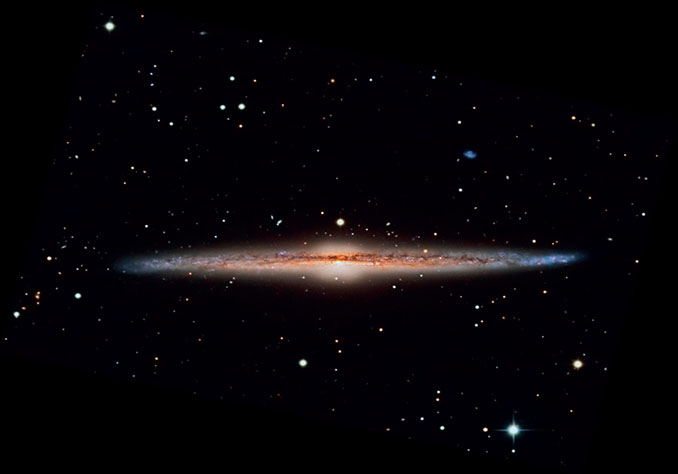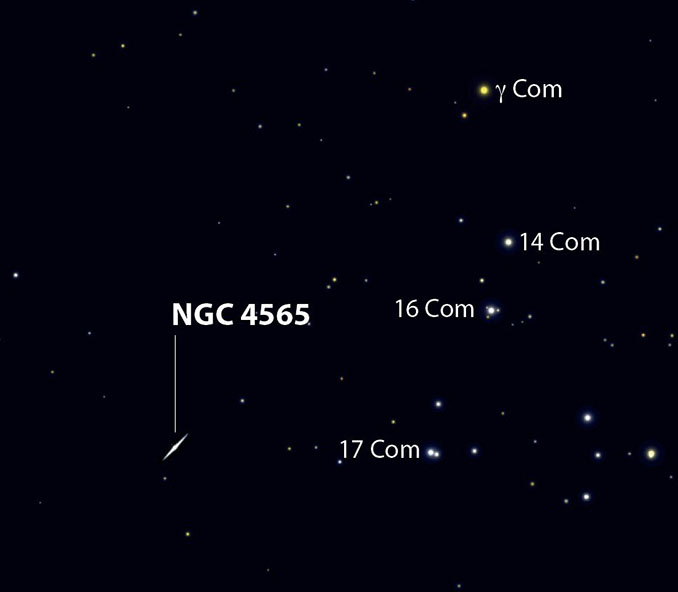
When: throughout the night
What’s special: Early spring heralds the rise of the galaxies, when over the next three months or so the prime-time night sky is overflowing with many great examples of these far-flung island universes. It’s quite an accolade then for NGC 4565, a stunning edge-on galaxy in Coma Berenices that’s also known as Caldwell 38 and the Needle Galaxy, to be widely regarded as the finest in its class. Edge-on galaxies offer something strikingly different through the eyepiece to the fuzzy blob of more run-of-the-mill NGC galaxies, even through smalleraperture telescopes.
NGC 4565 also has the advantage of being easy to find and it sits high in the sky from UK shores, tracing a wide arc that enables it to be observed right through the night during March.
How to observe: As evening twilight gradually gives way to darker skies at the end of nautical twilight (when the Sun has dipped more than 12 degrees below the horizon), at around 7.15pm GMT mid-month from London, Coma Berenices in its entirety has cleared the eastern horizon. NGC 4565 is located in the constellation’s northerly region, more than 10 degrees north of the boundary with Virgo, where there’s the vast agglomeration of Virgo Cluster galaxies. It lies about three degrees south-east of magnitude +4.3 gamma (t) Comae Berenices.
At mid-March from London, it culminates at a very favourable 65 degrees altitude and remains well placed through to the end of the night.
NGC 4565’s magnitude is listed as +9.6 and it covers about 16′ × 2.8′ at its fullest extent. Owing to its edgeon presentation to us, its narrow profile benefits from a high-surface brightness, rendering it visible as a tiny (~ three-arcminute), south-east- to north-west-orientated slither of light through telescopes as small as 60mm (~2.5 inches) in aperture.
Amateur images easily show NGC 4565’s central bulge, which is hinted at in an 80–100mm (~three- to four-inch) telescope. Upgrade to a 150mm (six-inch) aperture and the galaxy will extend to around 7′ × 1.5′, while on a good night a 200–250mm (eight- to ten-inch) telescope reveals something of the fantastic dust lane that bisects the galaxy’s entire major axis. It’s especially prominent where it splits the bright bulge into two halves.
NGC 4565 is a very luminous galaxy spanning about 100,000 light years and it is located 40 million light years from Earth. It was discovered by William Herschel in 1785.

